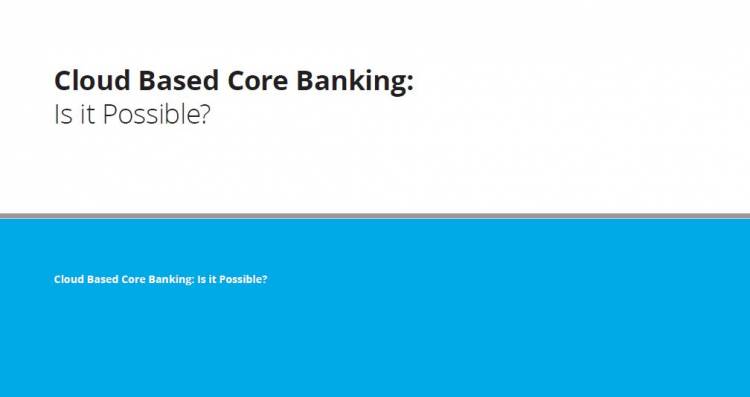Cloud based core banking: Is it possible? by Deloitte

Cloud computing for financial services
Over the years, cloud computing has transitioned into mainstream technology from bleeding edge. In 2017, 74 percent of financial services companies* in the industry, have already adopted some extent of hybrid/public cloud architecture. However, most financial institutions have typically taken a risk-based approach to adopting the cloud, beginning with proofs of concepts, Software as a Service solutions, new native cloud application development, and front-office functions but not necessarily core functionality. Hence the next question is, has the time come to move core processing to the cloud? And if so, how fast should businesses adopt and transform to use the cloud?
This thoughtware summarizes the immediate and long-term benefits for financial institutions when migrating their core banking infrastructure to cloud, while enlisting the risks and challenges associated. Some of them include:
Rewards
- Infrastructure savings: Cloud computing can cut out the high cost of infrastructure for companies, eliminating the need to maintain their own data centers.
- On-demand scaling and agility: Cloud-based services are agile and easy to scale up (or down) on-demand, adhering to organizational computing needs.
- Security & availability: The public cloud excels in two critical security areas. Information resiliency and privacy.
Risks
- Limited understanding of mainframe applications: Cloud migration of technical assets such as legacy platforms, can pose a risk if due diligence is not performed to ensure that all necessary dependencies are preserved and functionality tested.
- Preserving upstream/downstream dependencies: Depending on where a particular application falls within the data chain, upstream or downstream data dependencies must be accounted for when migrating said application to the cloud.
- Untangling data transformations from third-party sources: Core banking applications can rely on data from third-party systems. When transmitted into the enterprise, such data often goes through various layers of transformation to ensure consumption by a target application.
* Forbes, 2017 State Of Cloud Adoption And Security, Figure 7. (Apr 23, 2017)



















